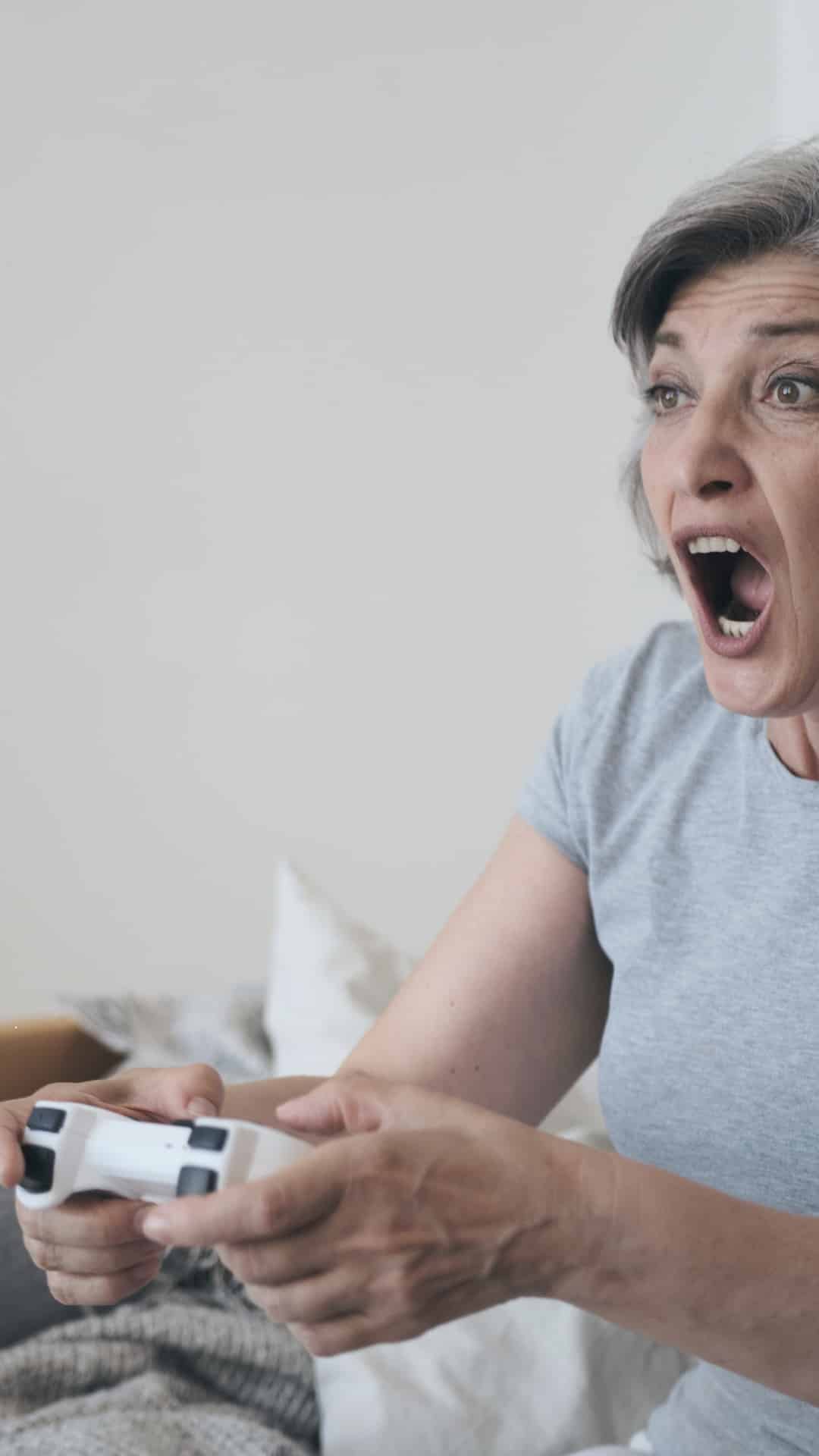
Understanding Pathological Demand Avoidance in Adults
PDA first appeared on the psychological scene in the 1980s. Elizabeth Newson coined the term. It was first seen in her research paper published in 2003 when it was published in the British Medical Journals. It was her hope to add another classification in order to avoid using, "pervasive developmental disorder not otherwise specified." She argued for a new criteria, based on a study.
Pathological Demand Avoidance (PDA) was recognized as a subtype of Autism Spectrum Disorder. It can be confusing and cause internal issues and get in the way of communication. Many mental health providers misdiagnose it as Oppositional Defiant Disorder (ODD) in adults. However, it is more of a can't do something issue than a won't do something issue. Defiance isn't at the root of the avoidance.
PDA is often a misunderstood profile of autism seen on the neurodivergent and autism spectrum. It involves extreme avoidance of everyday demands, a need to control situations, and a requirement for autonomy.
The term ‘pathological demand avoidance’ is rooted in the medical model and doesn't take into account the impact the terminology can have as a diagnostic label. A less pathologizing term is Extreme Demand Avoidance (EDA).
There has been a movement to create mental health diagnoses, often used as labels, that are less derogatory and pathologizing. It would be nice if the trend was picked up in the Diagnostic and Statistical Manual (DSM) and diagnoses more accepting and inclusive in general. Another alternative term, Pervasive Drive for Autonomy, was introduced by Tomlin Wilding. It's also known as pathological demand avoidance syndrome.
Many still see PDA as a developmental disorder that goes along with a diagnosis of autism. However, since neurodiversity is now known to be a biological difference in brain structure, it is starting to be seen by some as a neurological condition. Hopefully, this change in understanding will lead to a change in the name and lead to a change in how behaviors based on brain structure are treated.
With pathological demand avoidance, the nervous system gets overloaded, making it impossible to cope with demands in the moment. You can use coping mechanisms to create safety by working to control the environment, lessen the impact on your nervous system, and avoid a meltdown.
Understanding an adult meltdown may be easier if their reactions were thought of as a more complicated panic attack. The profile can look socially unacceptable to those who don't understand what's happening. A panic attack is more socially acceptable and better understood.
Having a "PDA attack" is extremely uncomfortable. The components are similar to the experience of panic if intolerance of uncertainty is wrapped up with overwhelming panic and anxiety. It isn't a chosen behavior. It's a survival instinct that creates an extremely debilitating condition. Demand avoidance isn’t something people tend to be drawn to.
Nobody would choose it on purpose, just like nobody wants to have a panic attack. Being extremely demand-avoidant is uncomfortable. It can become so intense and uncomfortable that the explosive nature can be mistaken for oppositional defiant disorder or conduct disorder.
PDA in Adults
This is a very difficult condition to live with. Recognizing the signs and symptoms in adults is crucial. It affects the ability to manage daily life, maintain relationships, and achieve personal and professional goals.
Pathological Demand Avoidance is most often recognized in the profile of autism but is now acknowledged by some practitioners to be present in other neurodiversities. You don't need to be autistic to experience it. There are nuances of adult PDA that differentiate it from typical demand avoidance.
In Adults, extreme avoidance of daily demands, a need for control, underlying anxiety and seeking safety are generally present. It's seen as an autism behavior but can coexist with ADHD and other neurodiversities.
A clinician specializing in Pathological Demand Avoidance can help with effective strategies for PDA - autistic and ADHD. It is a newer concept in the United States, and not well known even within the mental health professions. It can be difficult to find a practitioner that is familiar with the symptoms and management.
Assessment and diagnosis are even more difficult to obtain. The Diagnostic and Statistical Manual (DSM) does not formally recognize PDA as a separate diagnosis. Mental Health Professionals and the autism community see it as a distinct profile that requires specific understanding and approaches, but there is no formal diagnosis. It is currently recognized more widely in the UK than in the US, but neither use it as a formal diagnosis.
PDA Diagnosis
Since Pathological Demand Avoidance is missing from the DSM-5, practitioners tend to diagnose it within the broader context of neurodiversity and autism.
Practitioners consider detailed patient histories, questions about childhood experiences, clinical observations. It is also common to use a diagnostic measure with standard questions to gather additional information to use to hone in on a diagnosis. The Extreme Demand Avoidance Questionnaire (EDA-Q) is a good choice to help explore situations and experiences.
The EDA-Q questionnaire can help with diagnosis, but it is a measure designed for research, and practitioners should use it with that in mind. The adaptation for adults is the adult self-report (EDA-QA).

Diagnostic Criteria for Adult PDA
Patiological Demand Avoidance, as a distinct profile, distinguishes itself from common demand avoidance. However, diagnosis, particularly in adults, remains complex. Everyone has unique ways of being.
While there are standards, flexibility is needed to recognize things that fit the standard profile for PDA in adults. There is no requirement to be diagnosed with autism before an assessment to look for demand avoidance features. Practitioners diagnose using a cluster of commonly seen behaviors and traits that include:
- Avoid routine everyday demands. They can actively defy expectations and resist acting on their responsibilities.
- Use of social strategies to avoid demands
- They have difficulty completing tasks that are not aligned with their interests. They have a strong negative reaction and a marked demand avoidance that interfere with their plans.
- Impulsivity. Making spontaneous decisions and impulsive actions can clash with social norms and catch others off guard during social interactions.
- Sudden changes in mood, extreme variability in emotional reactions, and avoidance behaviors can strongly impact relationships.
- Comfortable in role play and pretend scenarios
- They need to be in control. Environment, routines, making rules and boundaries, social constructs, and environments are often involved.
- Making excuses to avoid tasks and other demands.
- Obsessive behavior focuses on people rather than things. They may focus intensely on particular aspects of their day.
- Seek dopamine. Show a preference for different and interesting tasks, activities, and conversations. The need for novelty can lead them to create chaos to avoid boring, routine tasks.
- They can take a combative, argumentative, aggressive, or defensive position against authority figures to stand up for their freedom and autonomy.
These behaviors are not merely oppositional and avoidant but are deeply rooted in anxiety and the need to maintain a sense of autonomy and control. At the core, there is a strong anxiety-driven need for autonomy. The diagnosis takes these complexities into account.
Adult PDA Behaviors
The intention is to create safety and stability, but the resulting behaviors may look like manipulation. It is difficult to function when the central nervous system is not regulated. When you are not yourself, safety becomes a priority.
Keep in mind that these characteristics are not the same from person to person and are not set in stone. They can vary quite a bit. Two people with the same diagnosis can differ significantly in their behaviors. They may only have a few symptoms that overlap. It is crucial to recognize the diversity and individuality from person to person. Each person may exhibit unique behaviors and experiences, even if they share the same diagnosis.
The profile characteristics can be adjusted to fit your lifestyle and your personality. A big part of making changes is learning about yourself and what helps you calm your nervous system and what amps it up. A PDA therapist can help you see things you may not have noticed before and figure out how to regulate your nervous system.
You can come up with some customized pathological demand avoidance strategies that work for you when you are overwhelmed. The more natural your strategies are to begin with, the easier it will be to adjust to using them. PDA in adults responds to more natural solutions that fit with who you are.
It may take some time to adjust to new strategies and notice when you need to use them. Ask for help if you need support. After you practice, the will become more natural and easier to access when you are anxious or overwhelmed.
Pathological Demand Avoidance Support
for PDA Adults
Understanding variability can lead to more personalized support, strategies, and interventions catering to each person's needs. This approach can help create a more supportive environment that respects autonomy and provides support, guidance, and structure when needed. Everyone needs their own fine-tuned process that fits their unique needs. PDA in adults requires a multifaceted approach.
Families and friends can navigate interactions with respect and understanding by acknowledging and embracing these differences. Coming from a place of acceptance and unconditional love promotes understanding, compassion, and effective communication. Recognizing triggers can help them avoid creating a triggering experience.
A PDA Therapist can help support you through the process of finding things that help you stay comfortable. You can work on building relationships, finding strategies for work, develop new ways to parent your children, improve your productivity at home and at work, address challenges in communication, and find things that improve your quality of life.
Distinguishing PDA from Typical Demand Avoidance
Reacting to demanding situations and becoming avoidant is deeper in the profile. Standard avoidance may seem to fit, but it is not as intense or as pervasive. That is why the term pathological is used.
The word "pathological" communicates its presence across all parts of life. There are less pathologizing words that could be used to stress that PDA is not a decision, but a strong, deeply seeded biological message of not being able to do something. It can feel paralyzing.
Avoiding demands is a common behavioral response in humans. People may procrastinate or show reluctance toward certain activities, usually as a reaction to stress, discomfort, or fatigue, but not to an extreme degree. While typical avoidance can look like PDA at times, many components are missing.
Pathological Demand Avoidance is seen as a pervasive disorder. It is all encompassing and presents with severe, and often sudden reactions.
The avoidant behavior is driven by an intense anxiety and a need for control. Giving directions or pushing for cooperation can worsen the response exponentially. Being stuck in avoidance can create situations that make someone completely unmovable from their persistent stance. There is no other available choice. The reaction can have a strong underlying need for safety. It can help to have some pathological demand avoidance strategies to make things go more smoothly.
PDA Profile Characteristics
Unlike typical avoidance or procrastination, this version is consistent and shows up in multiple areas of life. It may present differently in different settings depending on the situation and other variables.
Adults can experience a substantial impact on relationships. Tasks avoidance can have a severe influence on a partnership when instability is frequent.
The deeply anchored anxiety is pervasive and reaches into every corner of daily life with a high level of intensity. The intensity is far and above that of standard avoidance.
Strategies for dealing with PDA can improve quality of life. They can also make a difference in relationships.

Living with Adult Pathological Demand Avoidance:
Adults with PDA often face significant challenges in both their personal and professional lives. The key to managing symptoms is understanding and addressing the underlying anxiety and need for control that drives demand avoidant behaviors. This requires looking into personal sensitivies and other variables.
Living with PDA can cause difficulties in establishing and maintaining relationships due to the avoidance of demands and the need for control. Feelings of isolation and frustration are common motivators to seek counseling and find solutions.
In professional settings, managing symptoms and sensitivities may require accommodations such as flexibility in work tasks, clear communication strategies, breaks with quiet time alone, and opportunities for autonomy. Personalized accommodations that consider reactions present differently in different settings can help manage individual characteristics.
Loved ones and professionals need to approach and communicate with understanding, patience, and empathy to support emotional well-being and a sense of self. Understanding the strategies for dealing with PDA can help with family and work dynamics.
Working with a neurodiversity-friendly therapist can address anxiety, help find ways to manage emotions differently in different situations, and develop a personalized way of being in various situations and environments. Different people respond to stimuli in different ways.
Addressing the underlying anxiety and safety issues that create a need for control helps build a fulfilling life despite challenges.

Adult Pathological Demand Avoidance Strategies
- Flexible Schedules: Creating a flexible routine can reduce anxiety around demands.
- Supportive People: Surrounding yourself with understanding and accommodating people helps manage day-to-day stressors.
- Interest-Based Activities: Engaging in activities that align with personal interests can help avoid the overwhelming feeling of external demands. Interesting activities can also help with focus, engagement, and productivity.
- Communication Techniques: Learning practical communication skills, such as setting boundaries and assertively expressing needs, can help you navigate challenging situations. A PDA therapist can help you figure out how you want to communicate.
- Sensory Considerations: Awareness of sensory sensitivities and incorporating sensory-friendly environments or accommodations can help reduce overstimulation and stress.
- Regular Self-Care Practices: Prioritizing self-care activities like good nutrition, taking time to be quiet and rest, engaging in calming activities, taking a walk, and proper sleep hygiene can improve overall well-being and resilience.

Strategies for dealing with PDA
Here are some coping strategies and lifestyle adjustments that can support you in various situations and environments:
- Be ready for changes: A flexible mindset can help lower anxiety levels and make transitions go more smoothly. When you expect a change, it's easier to adjust.
- Ask for a Weekly or Monthly Schedule: It can help to know what is planned so you can prepare for any demands that may come up.
- Be aware of Environment: Look around you and be aware of environmental stressors such as light and sound.
- Interests as tools: Use your personal interests to your advantage to keep you focused and to avoid overwhelm.
- Communication Signals: Come up with some shorthand communication signals to use when you have difficulty talking.
- Sensory Considerations: Cary some small sensory items to help you calm your nervous system.
- Self-Care Practices: Check in on your stimulation level regularly or use a time to remind you to take scheduled breaks to avoid overstimulation. You can step away for a while for a change of scenery, switch activities for variety, or anything else you know will be helpful.
- Ask for Help: If you feel like your becoming overwhelmed, ask for someone to support you, or go with you to a quiet area with low stimulation. Sometimes it helps to be reminded to use your strategies when your nervous system starts to get overloaded.
- Professional Support: Working with a therapist specializing in PDA can help you develop valuable insights and coping mechanisms. Just spending time with someone who understands can make you feel supported and safe.

Working with a neurodiversity-friendly therapist for support.
Using strategies and approaches like these can reduce the stress and challenges of living with PDA. They can help you navigate daily demands while improving your quality of life.
You just have to find the combination of things that work for you to create your solutions. This can take time, patience, and lots of experimentation.

PDA and ADHD
There is a continuing debate about Pathological Demand Avoidance cooccuring with other neurodiversities. It has traditionally been more colsely associated with autism, and is still is. It is becoming more accepted that it can coexist with other neurodiversities, such as ADHD.
Both conditions share traits like impulsivity and difficulty with executive function, which can complicate the clinical picture. However, while ADHD primarily involves issues with focus, attention, impulsivity, and hyperactivity, PDA is centered around an extreme avoidance of demands due to high anxiety and a need for control.
It can be experienced as paralysis, brain fog, a deep heaviness, or more emotional symptoms. Everyone has their own experience. There is even variability from one instance to the next. There are so many parts to consider.
PDA adults have trouble with the demand of tasks even when they want to check them off their list. It isn't for lack of trying, either.
More recent studies have found that there may be a stronger link to ADHD. I see this in clients struggling with task initiation with some ties to differences in awareness of time passage and defense mechanisms linked to rejection sensitivity.

Coping Techniques
for Adult PDA
The intense anxiety that comes with Pathological Demand Avoidance can leave you stuck in your tracks when you're in a situation where you feel unsafe and out of control. It can seem like the world is falling apart around you while you're tied up, burning at the stake, and there's nothing you can do.
Managing symptoms involves a multifaceted approach, combining self-awareness, tailored strategies, and often professional support from a PDA therapist. Creative strategies can help you avoid uncomfortable situations. They can help you get things done and mold your life into what you want it to be. Using strategies that are you own helps to reduce resistance to the things you want to do.
Pathological demand avoidance strategies will work best when they are your own. You know what is right for you. It may take some time to find just the right things that help you get things done that you want to get done. Coping is usually an important piece of the puzzle.
Here are some coping techniques and strategies that may help you get started finding what helps you navigate these challenging situations:
Customize Your Coping Techniques
For Adult PDA

Finding what works best for you may involve some trial-and-error experimentation. Coming up with strategies that work well for you can take time and patience.
You deserve to prioritize self-care. Try different pathological demand avoidance strategies until you find what works for you in various situations. Keep experimenting with different ideas, adjust them to fit better. Try them out as many times as it takes for them to be altered and work smoothly and comfortably.
Seek professional guidance if you need support to effectively manage your symptoms. For best results, find a neurodiversity-affirming psychotherapist you can be yourself with.
Adult pathological demand avoidance can be difficult to talk about. You need to feel safe and accepted by your therapist to be comfortable with triggering subjects.
For your techniques to fit with your personal needs, it will take time to look at all aspects of your needs, the environments you want to use your new techniques, and the social constructs you may need to traverse. The more details your solutions account for, the better they will work for you.

Pathological Demand Avoidance Support
Neurodiversity is still not fully understood. It will take time for the diagnostic criteria to catch up with the neurodiversity community. We need neurodiversity advocates continue to argue for changes based on neuroscience for changes to be adopted more uniformly.
Though not officially recognized as a separate diagnosis in the Statistical Manual of Mental Disorders (DSM-5), pathological demand avoidance is a significant aspect of neurodiversity.
Management requires tailored approaches for comfort and support. Understanding the unique behaviors and needs associated with PDA can help create safe environments that minimize stress and promote well-being. Knowing what you need is a good place to begin. Things that overwhelm you and overload your nervous system can be manages with strategies that address specifics. Living with pathological demand avoidance can get easier.
Strategies that fit with individual needs help reduce challenges. You can find the things that support you best with some help from a mental health professional.
Living with pathological demand avoidance:
A PDA Therapist Can Help You Find Solutions
Pathological Demand Avoidance challenges can be tricky to figure out. Be patient with yourself. We can tailor solutions to help you cope with the types of challenges you usually encounter. When you have a plan ahead of time, you can implement it earlier in the process and reduce stress and anxiety before they escalate.
Working with a PDA therapist can help you navigate the complexities and unique challenges that come with extreme demand avoidance. In personalized therapy sessions, you can safely communicate your needs and develop positive ways of engaging with challenging scenarios.
You can express your feelings and concerns without judgment when you have a good therapeutic relationship in a safe and supportive environment. You can collaborate with a clinician specializing in PDA to increase hope and feel more empowered.
Supportive conversations can help you make changes that lead to a more fulfilling and balanced life.

